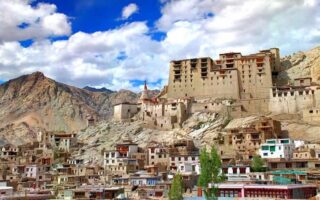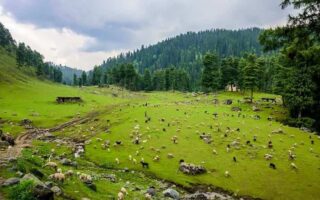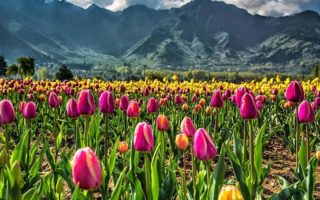Jammu and Kashmir is a place where people from all religions come to worship the gods as Jammu and Kashmir is known as Land of Gods and this place is said to be Heaven on the Earth. Pilgrims of Jammu & Kashmir is visited by people from all over the world. Mostly all the temples of J & K are located in or around the Himalayas with the breathtaking and picturesque view.
People not only come here to enjoy the beautiful view of the snow capped mountains, cold climate but also to get the blessings of their god by worshipping them. The wonder creations of so many temples are just amazing to watch.
Jammu & Kashmir is located on the Northern part of India which has three main regions that includes Jammu, Kashmir and Ladakh. The main languages which people speak are Hindi, Kashmiri & Dogri. The best time to visit this place is from October to February.
Amarnath Dham
- Location: Amarnath, Srinagar Kashmir Region.
- Altitude : 4175 m
- Best Time for Darshan: July to August.
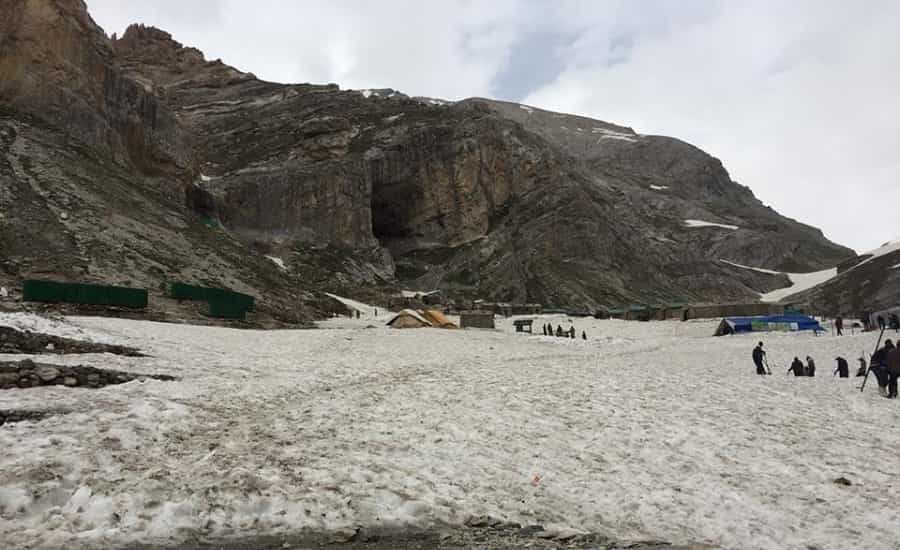
Snow bound beauty of nature at its best with environment of god blessings filled with chants of “Har Har Mahadev”, Amarnath in Jammu and Kashmir is gods own place on Earth. One of the most sacred Hindu pilgrimages, Amarnath with its beautiful scenic valleys is the toughest to reach.
Amarnath caves, devoted to Lord Shiva and according to beliefs the place where Shivji narrated to Parvati the secret of immortality of life, is a place where every year a natural Shivlinga of ice is formed which is open to public for a certain period of time. The tranquility of the surroundings and the pious atmosphere blended with the natural beauty of the area makes the tough trek an enjoyable experience.
Another beautiful location and a popular tourist location is Sheshnag Lake, where tourist gets to enjoy the beauty of pristine white snow bound mountains and lakes. The best time to visit Amarnath is May to October.
Amarnath Yatra – Ice Cone
The formless form’ was the ice cone actually called before but it came for something else. The ice cone is said to be a Linga, a disclosure of the Lord Shiva’s phallus. This is said to be the holiest place for Hindus as around every year thousands of people from all over the world come to take blessings. The Ice Linga comes every year and it comes naturally.
In the month of July or August, which is the full moon of swan month, around more than ten thousand pilgrims(Yatri) come to offer food, money, flowers, sweets and take the blessings form the Lord Shiva.
Story of the Cave
There are many stories related to Shiv Linga in Amarnath. The people who are older say that many years ago there was a shepherd called as Buta Malik, who was a Muslim. One day he was given a big bag of coal by a saint (Sadhu). After reaching home when he looked into that sack it was gold. He was very happy so he went back to thank him but he couldn’t find him but he discovered the cave.
Babor Temple
- Location: On Jammu-Srinagar Road to the East, 72 kms away
- Attractions: Five temples that are Ruined partially
- God Worshiped: Lord Shiva
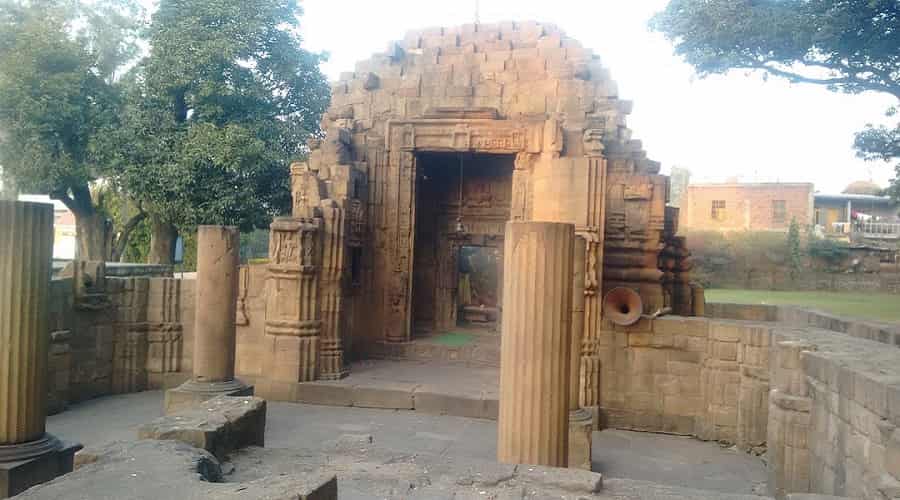
Babor is situated 72 kms away on the east of Jammu-Srinagar Road in the Region of Jammu in Jammu & Kashmir. The prime attraction there is there are five temples that are ruined. The people there worship lord Shiva. The five temples that are partially ruined have figures of gods that are carved.
Babor is popular for it five temples that are ruined partially that has figures carved of Gods of Hindu. The carvings are done minutely, there are statues of Gods and Goddesses that are beautifully sculptured, the elephant or lions head is made on the pillar, the roof beams and slabs that are beautifully decorated, and all this is installed without any material that binds.
The one of the finest statue is of Goddess Ganga. There are many temples in Babor that include tasteful and richly temples that are decorated
The Shiva Temple
The Shiva Temple is beautifully decorated that has panel sculptured of bulls, geese and floral carvings, an idol with cavalier of two arms removing their bows and the other one is of God Narasimha. The other idol is of Lord Krishna that is with a flute and is playing the flute with two of the attendants.
Vaishno Devi
- Location: 61 kms away from the North of Jammu
- Altitude: 5,200 on the ranges of lower Himalaya
- Best Time for Darshan: Any time in the year
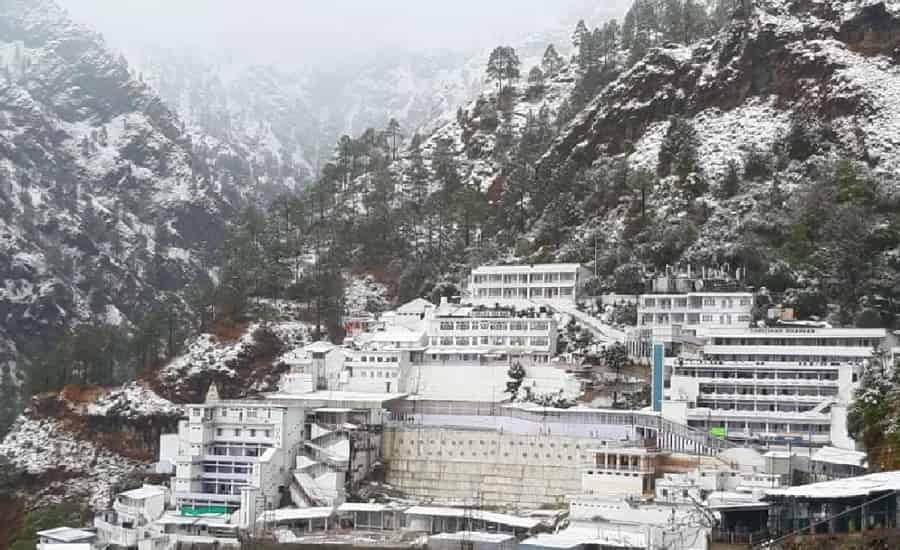
Vaishno Devi is located 61 kms away from the north of Jammu region in Jammu & Kashmir. It is situated at a height of around 5,200 feet above sea level. This is considered as the holiest place and is worshiped by everyone.
People who visited this temple say that the call of Devi cannot be ignored and is the place where helpless gets help from the Devi and nobody has returned empty handed. People come here by singing the praises of Vaishno Devi. The cave had three images of the deities that include Mahasaraswati, Mahakali, and Mahalakshmi.
There is an Aarti or prayer that is done twice in a day. The Aarti is done for around two hours and is done once is morning during sunrise and in the evening during sunset. The holy cave is closed for the yatris at the time of Aarti. Only few people are allowed inside which includes the officer, attendants (Sahayaks) and the priest (Pujari),
This place can be visited at any time in the year but in winter it is a bit difficult as one has to go through small routes which are blocked many times due to the snow-fall.
Story of the Discovery of the Shrine
There was a Brahmin named as Pandit Sridhar who lived in Hansali village. This village is located on the Trikuta Mountains on foothills. Once he met a small child who was very beautiful. The name of the child was told as Vaishnavi and she was on the hills.
The small girl asked to call people from the village at his place to have food. When the guest came, he did not prepare anything. He was tensed as the food was not prepared and at that time he saw Vaishnavi coming out of his house and said that everything is prepared.
The guest went after the feast. He went inside to locate her but she was not there. He started searching for her and then he reached a cave. Some light went into his eyes and he saw that Vaishnavi got transformed into an idol with eight arms and was sitting on a lion. She said that she is in this cave in the form of Shakti which is into three forms of Lakshmi, Kali and Saraswati. From that day people worship the goddesses and taking blessings.
Shiva Temple, Pandrethan
- Location: Pandrethan
- Attractions: The roof, ceiling and the Pediments
- God Worshiped: Lord Shiva
- Famous As: The only monument that is standing.
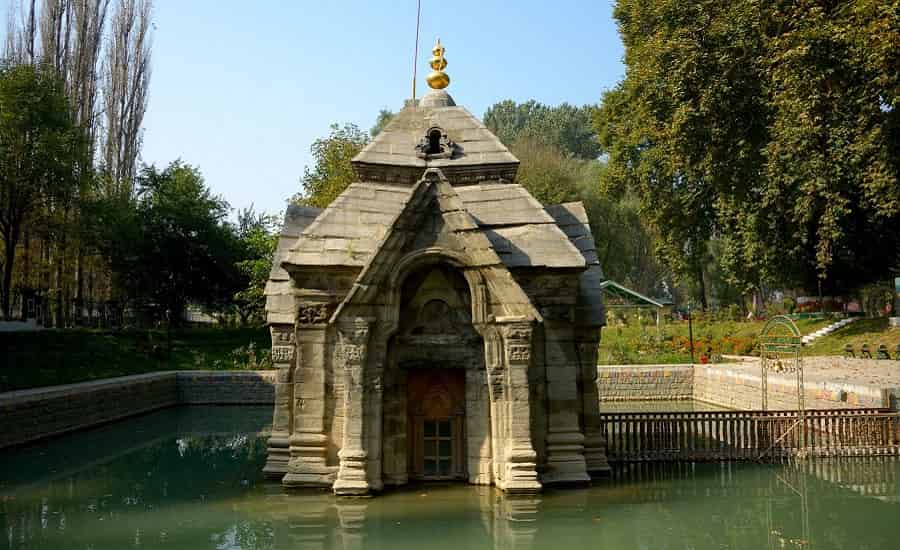
Shiva Temple is the only monument that is still in Pandrethan. There is a Shivlinga which is recently placed. The temple is situated in the Jhelum, on the side of a bend on the main road. The Roof, Pediments and the ceiling are the prime attraction of the temple.
Earlier, this temple was found similar to the Meruvardhanaswami by an archaeologist that is built by Meruvardhana. Daya Ram Sahni has already given the conclusion statement for the identification. The Meruvardhanaswami temple is of course of Lord Shiva but the figure of the main door that presents “Lakulisa” that made a god of “Pashupata” teacher
The Internal Shrine
The internal structure of the doors and floors shows that earlier there was a Shivlinga or the Mahadeva image with 3 to 4 heads. On the ceiling and the top of the main door there are sculptures that indicate that the temple is from the 10th century AD.
The walls in the Shiva Temple are rested upon the projecting member allay with the foreparts of the elephants that supports the structure. Above this is Khura that is filled to support the ceiling and the plaster and the walls are plain. The ceiling is beautifully carved. The ceiling is made up of nine stone slaps that are properly put in three sets. There are four triangular slaps in the bottom that is allied with the pair of bears flying with garlands. These figures are beautiful and are arresting and somewhat natural.
Kheer Bhawani Temple
- Address: Duderhama Ganderbal Bridge, Tullamulla 193501 Srinagar
- Attractions: Shukla Paksha Ashtami and Jyeshth Ashtami
- Visit Duration: 2 to 3 hours
- God Worshiped: Ragnya Devi
- Built By: Maharaja Pratap Singh
- Built In: 1912
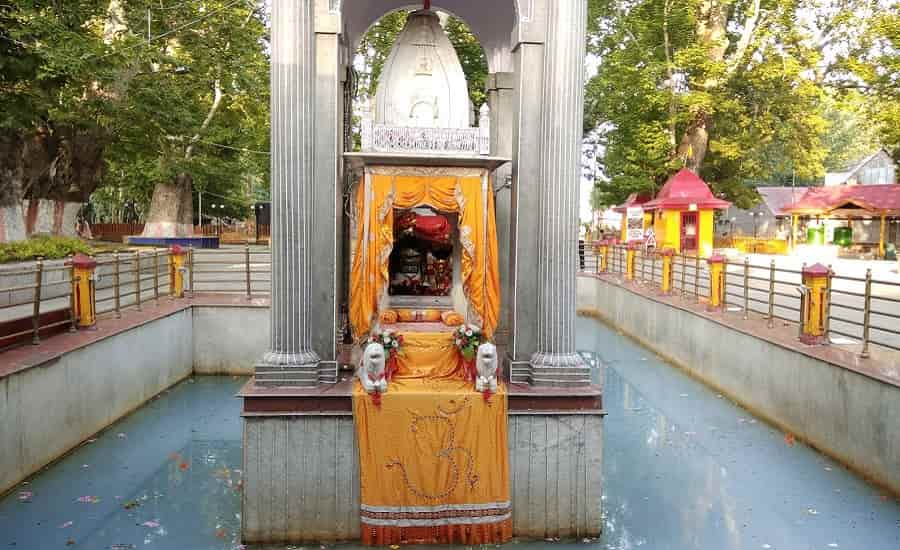
Kheer Bhawani Temple is an important shrine for Hindus. It is located in Tullamulla in the District of Srinagar that comes in Jammu Region of Jammu & Kashmir. People worship the goddess Ragnya Devi that is the presiding deity there. This temple was built in 1912 by Maharana Pratap Singh.
There is a festival celebrated in the month of Jesht Ashtami (May/June) and it is celebrated every year on this period and numbers of Hindus are present to offer prayers to the Mother. In Shukla Paksh Ashtami devotees come in the Hawan organized to praise the Mother.
The temple is decorated with the small temple of white marble of Goddess Ragnya with the complex surrounded by Chinar tree all over.
The story of the temple is said as Goddess Ragnya was worshiped by Lord Rama, during the period of exile and in return he got the God of Monkey – Hanumaji. He had to shift his mother’s seat after the exile period got over and was taken to Shadipora and then later was again shifted to this place as per the wish requested by Goddess Ragnya. This is said to Pandit Raghunath Gadroo in his dream by Goddess Ragnya
Sudh Mahadev Temple
- Location: On Srinagar towards the northeast, 120 kms away at Kud.
- God Worshiped: Lord Shiva
- Also Famous As: Pilgrimage center
- Prime Attraction: The Festival Of Asad Purnima
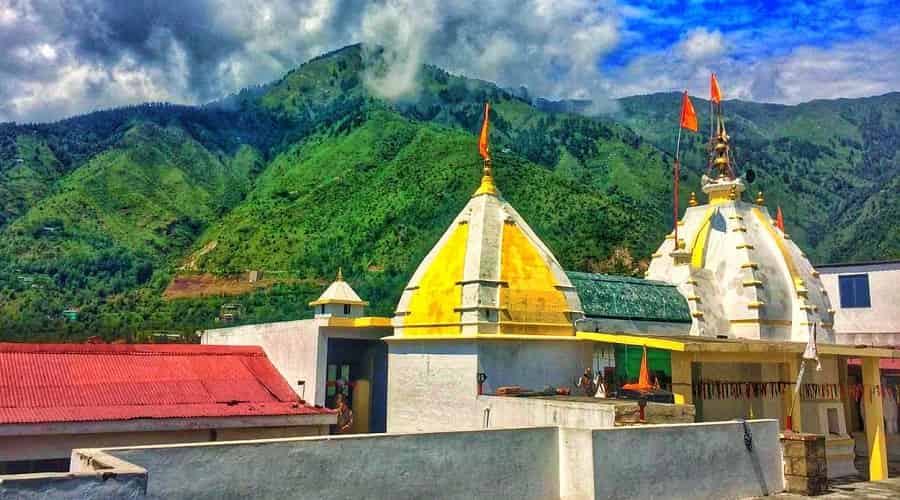
Sudh Mahadev Temple is located in Kud, opposite the Srinagar road to the northeast around 120 kms away, in the Jammu Region of Jammu & Kashmir. The prime attraction of this temple is the festival that is celebrated of Asad Purnima.
This temple is famous for its charming beauty, as a center for devotion and also important for archaeologists. It lies on the banks of the Dewak River which is a place as important and holy as Ganges. The Dewak River comes down from huge mountains and goes from the jungle coming from the boulders and rocks.
The Festival of Asad Purnima
There are many people who come here for the three day festival of Asad Purnima which occurs in the month of mid June every year. There is dancing, music and singing all over for all three days. The idol of Lord Shiva and Goddess Parvati is in the Shrine with the Trishul (iron trident). The Trishul is very interesting as it is been said that a demon was killed by Lord Shiva with that Trishul.
The other famous places nearby the Sudh Mahadev temple are Man Talai and Gauri Kund. Both these places are just 5 kms away from the Sudh Mahadev Temple and are famous places there.
Also Read: Famous Lakes in Jammu & Kashmir
Buddha Amarnath Temple
- Location: Towards the Northeast of Pooch town, 25 kms away
- Attractions: Shiv Linga of White stone
- God Worshiped: Lord Shiva.
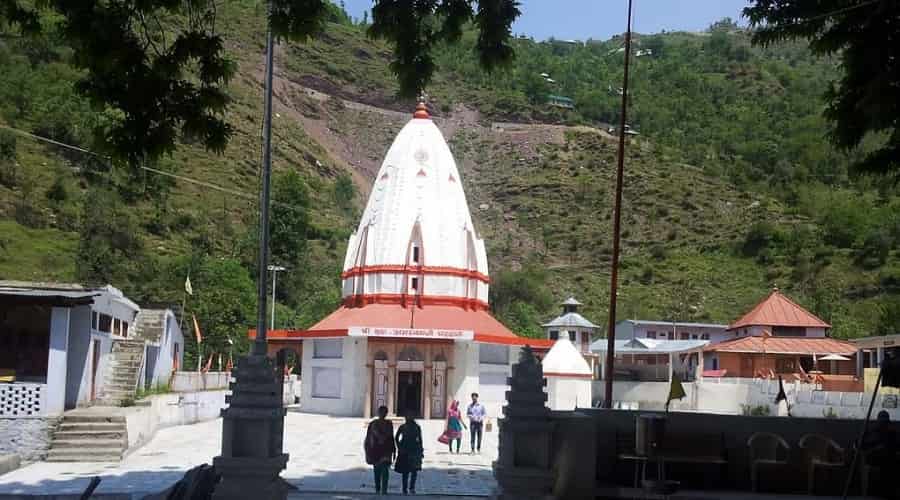
Buddha Amarnath Temple is located in Poonch village towards the northeast that is 25 kms away. It lies in the Jammu region of Jammu & Kashmir. The people there worship Lord Shiva with flowers, sweets and want in turn the blessings of Lord Shiva. The temple stands apart with the Shivlinga that is made up of white stone and is situated on the top of the hill.
The unique temple of Shiva is on the foothill with the Shivlinga that is made up of white stone. The Loran stream flows near to the temple. The locals say that the Pulasta Rishi who was the grandfather of Ravana, performed meditation or Tapasya and so it is called as Pulsata stream.
This temple is older than the temple in Kashmir of Amarnath. Hundreds of people come here on the day of Raksha Bandhan. People from an area used to visit this place before partition but now they cannot visit it as the place is under Pakistan.
Must Read: Places to Visit in Jammu & Kashmir
Purmandal and Uttar Behani Temple
- Location: Opp Pathankot Road, 39 kms away towards the southeast
- Attractions: The Temples of Rock
- God Worshiped: Lord Shiva
- Famous As: The spot for Picnic
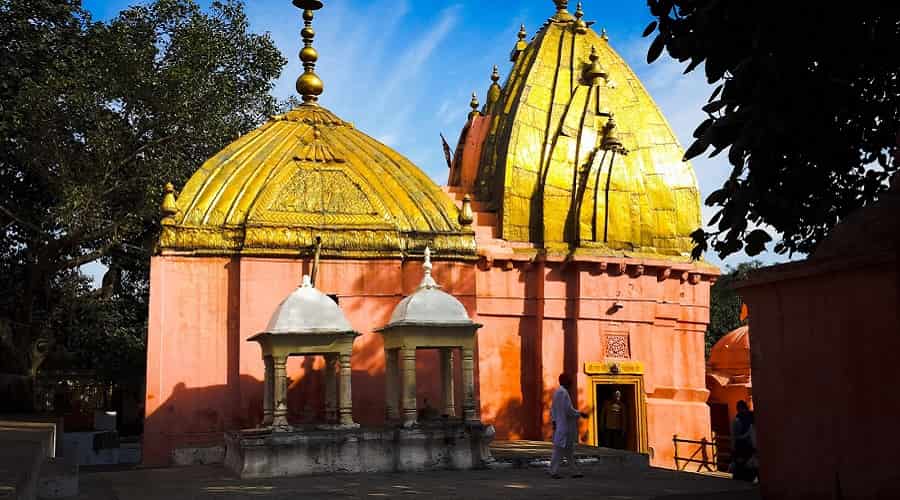
Purmandal and Uttar Behani temple is situated opposite the Pathankot Road to the southeast and is 39 kms away. The temples of Rock are the main attraction found here. The deity presiding here is of Lord Shiva, which people give lot of importance and worship. The local people usually come here for picnics as it is a famous place to enjoy the beautiful sights.
The temple is situated in the Shivalik range, the amazing rock temples can be seen from a distance. Maharaja Ranbir Singh was famous for his support of learning and art, and thought of making a pilgrimage center here. There are different spots between Purmandal and Uttar Behani temple which were named after the birth of the country.
The project of the construction on these spots was started by him. Only few shrines could be completed and later he died. The project was stopped after his death. The half finished temples and the material to make these temples are still spread and scattered around.
Wall Paintings
There are number of paintings which are beautiful and are in great numbers on the walls of the building. These paintings have been the part of the attraction after the temples. The beautiful thing other than this which attracts people includes a marble bull that is white and is huge, the bell which is of bronze and is outside the temple but in the complex and the articrafts that are left. Behani which were named by him on different tirth of the country.
The temple is constructed on a rock and the basement that is double is cut from the rock. The stream that flows on the rocks at the base is known as the Dewak and is considered as important by the Hindus.
Also Read: Famous Gardens of Jammu & Kashmir
Raghunath Temple
- Location: Jammu city
- God Worshiped: The Lord Rama
- Construction Stared By: Maharaja Gulab Singh in 1835 AD
- Construction Completed In: Maharaja Ranbir Singh in 1860 AD
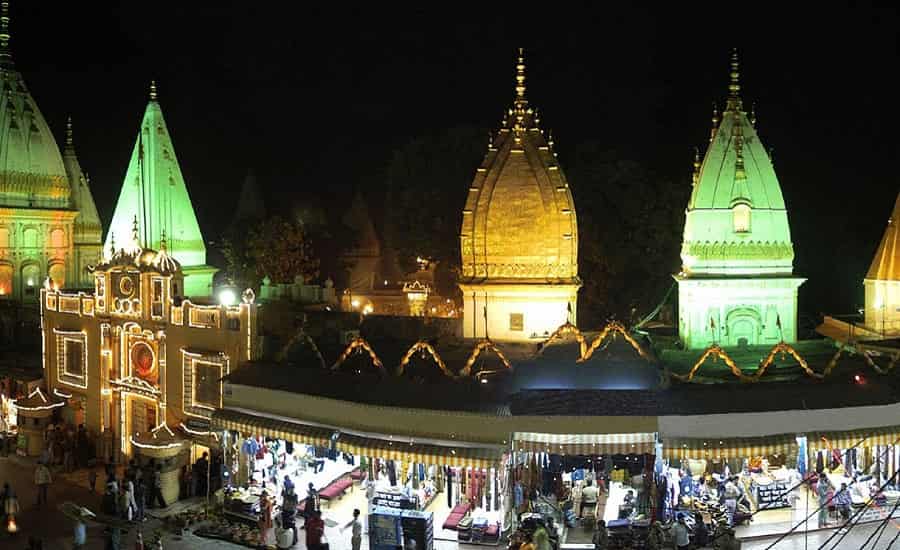
Raghunath Temple is popular among the people and it located in the city of Jammu in Jammu & Kashmir. The deity that is presiding is of Lord Rama. The construction of this temple was started by Maharaja Gulab Singh in1835 and was completed by Maharaja Ranbir Singh in1860. The temple is situated around the other temple in the heart of the city.
The walls of the temple inside are covered with gold sheets from three sides. The ‘Saligrams’ worth of Lakhs are there on many galleries. There are many galleries in the temple. There are many temples in the surrounding of Raghunath Temple which are dedicated to many gods and goddess from the epic Ramayana.
Martand Temple
- Location: Martan, Jammu and Kashmir
- Century: 19th century
- Built By: King Lalitaditya
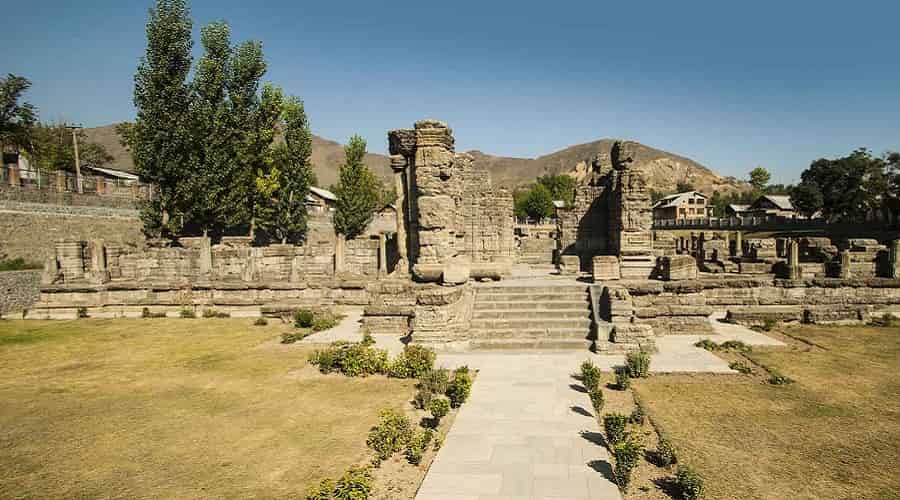
Martand Temple is situated in Anantnag District of Jammu & Kashmir. This magnificent piece of architecture is now in its ruins. The temple was built as a dedication to the Sun God. Its builder, Lalitaditya himself belonged to Surya dynasty. This excavation site is the perfect example of the skill set and craftsmanship of the artists who were responsible for building it.
Destruction of the Temple
There were several factors that were responsible for the continuous destruction of the temple premises. One of the foremost reasons was the vandalism by certain people who removed the images and pieces of slabs from the complex. This was further aggravated by the exposure of the premises to the destructive forces of nature. Lack of repair and renovation, use of weak building material, and susceptibility of the limestone to weathering processes are some of the reasons that were responsible for the gradual deterioration of temple.
Attractions of the Place:
The style used in Martand Temple is unique and no contemporary towns or cities that are at par with its architectural beauty have been found till now. The remnants of this beautiful structure have been the focus of studies for many archeologists. The temple was constructed on an elevated plateau. Overlooking Martan village, this place is adorned with mesmerizing beauty and serenity. The panoramic view of the mountain that stands behind the mountain is appealing to the eyes of the tourists. The lush green forests that are framed with icy mountains are like jewels adorning the vast expanse of the temple.
The temple is built in gothic style. Presence of a massive number of columns is a distinctive feature. Overlooking the valley of Kashmir, the temple premises decorated with a spacious courtyard and a number of cells. Some of the other distinctive features that are unique to Martand include pilaster, uniformly spaced medallions, and motif. The Doric capitals of the pillars and Attic bases indicate the Greek influence on temple architecture. An excellent example of Kashmiri art, Martand Temple is built in limestone. The walls are decorated with murals influenced by the art of Pala Kingdom. A huge copper image of the sun deity was highly revered by the worshippers. Today the ruins of this temple stand as a reminiscences of the past.
The temple with its grandeur and dignity mirrors the artistic taste of Lalitaditya who was so passionate in building monumental constructions that he used to spend the booty collected from wars in building artistic temples that exemplified his glorious empire.
The temple architecture is clearly influenced with Kashmiri style. In fact, it stood out from its contemporaries in style and size. The king built a series of other temples at his capital at Parihasapura. These temples were built as a dedication to deities like Mahavarha, Garudstandard, and Muktakehsava.
Martand holds a high place in the architectural brilliance and is an embodiment of the skill of the artists.
- Also Read: Famous Fort & Palaces in Jammu Kashmir
